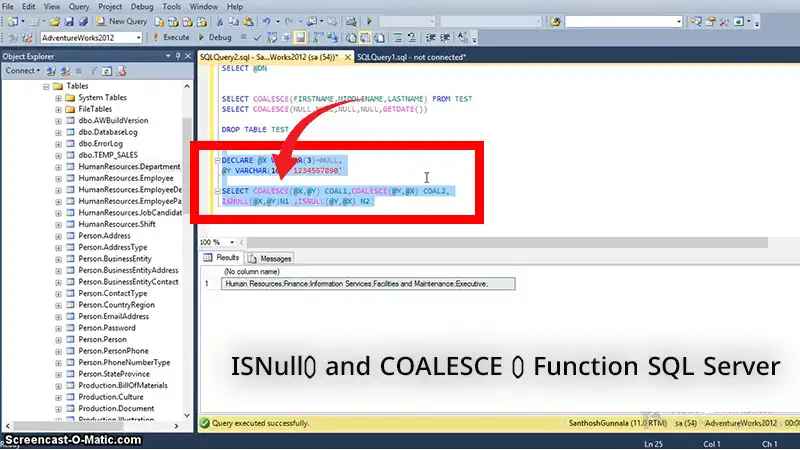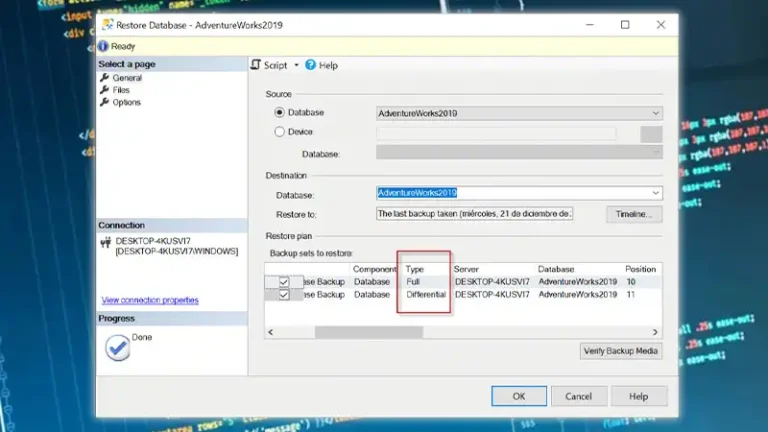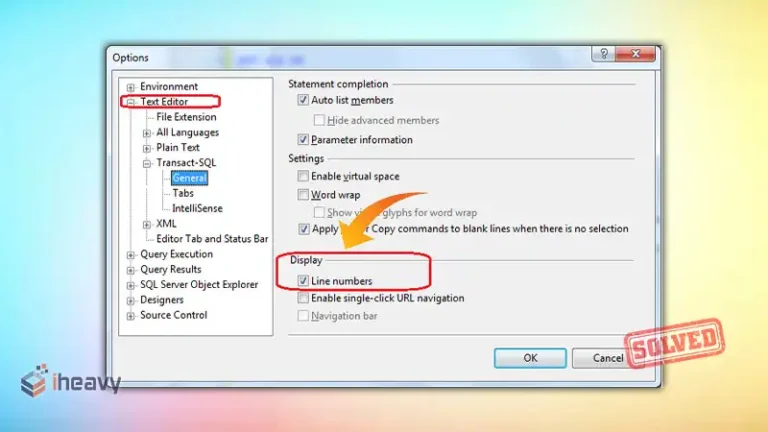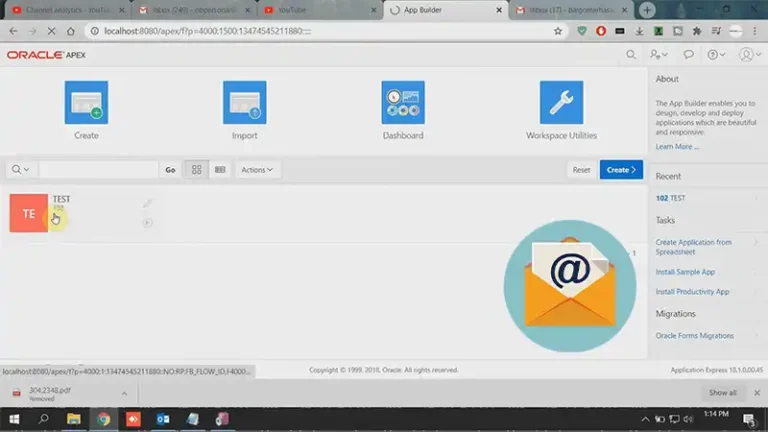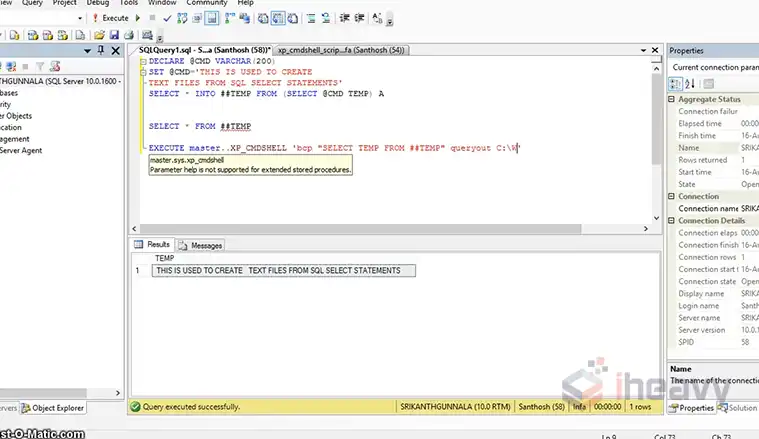Difference Between ISNull() and COALESCE () Function SQL Server | Comparison Guide
Handling null values is an important aspect of writing robust SQL queries. SQL Server provides two handy functions – ISNULL() and COALESCE() – that allow substituting default values for nulls.
In this comprehensive guide, we will talk about ISNULL() and COALESCE(), explaining their syntax and key differences. We will also look at examples to understand when to use each function.
What is the ISNULL() Function?
The ISNULL() function allows replacing a null value with a specified replacement value. The syntax is:
ISNULL(check_expression, replacement_value)
It accepts two parameters:
check_expression: The expression to check for null. This can be a column name, expression, or variable.
replacement_value: The value to return if check_expression is null.
For example:
Here, ISNULL() checks the MiddleName column for rows with a null value, and replaces them with ‘N/A’.
What is the COALESCE() Function?
The COALESCE() function returns the first non-null value from a list of expressions. Its syntax is:
COALESCE(expression1, expression2, … expressionN)
It accepts two or more parameters. The parameters can be column names, expressions, variables etc. COALESCE evaluates the parameters sequentially and returns the first non-null value.
For example:
Here, COALESCE() checks the Phone column first. If it is not null, that value is returned. If Phone is null, it checks Mobile next and returns that non-null value if found. If both Phone and Mobile are null, it returns the final default value ‘N/A’.
Comparing ISNULL() and COALESCE()
Now that we have understood the basics of ISNULL() and COALESCE(), let’s compare them across some key factors:
1. Number of parameters
ISNULL() accepts exactly two parameters – the expression to check and the replacement value.
COALESCE() can accept two or more parameters. The parameters are checked sequentially for a non-null value to return.
2. Portability
ISNULL() is not part of the SQL standard – it is specific to SQL Server and some other Microsoft products.
COALESCE() is defined in the ANSI SQL standard and hence portable across databases.
3. Data Type Precedence
For ISNULL(), the data type of the return value is always determined by the first parameter. The second parameter is converted to the data type of the first parameter if required.
For COALESCE(), the data type of the return value is based on data type precedence and promotion rules. It returns the highest precedence data type from the parameters.
4. Performance
ISNULL() is faster than COALESCE() in SQL Server since it is a native T-SQL function directly implemented in the engine.
COALESCE() has slightly lower performance as it is translated into a CASE expression before execution.
5. Replacing complex expressions
ISNULL() can directly replace simple expressions, but replacing multi-value or complex expressions requires nesting multiple ISNULL() functions.
COALESCE() allows easily replacing multi-value expressions by specifying all the alternatives as parameters.
6. When to use ISNULL() and COALESCE()?
Based on the above comparison, here are some general guidelines on when to use ISNULL vs COALESCE:
- Use ISNULL() when you need to check a single expression for null and replace it with a default value. It is simple, fast and native to T-SQL.
- Use COALESCE() when you need to check multiple columns or expressions in order for a non-null value. It allows setting a priority order conveniently.
- Prefer COALESCE() over ISNULL() for portability across different database systems since it is ANSI standard.
- Use COALESCE() when the return data type should be based on the inputs rather than dictated by the first parameter.
- Use ISNULL() nested within COALESCE() if you need both capabilities – checking multiple expressions in order and ensuring the return type matches the first parameter.
Best Practices for Using ISNULL and COALESCE
Here are some best practices for using the ISNULL and COALESCE functions:
- Use ISNULL when you need to replace a NULL value with a specific replacement value.
- Use COALESCE when you need to return the first non-NULL value from a list of expressions.
- Use descriptive names for your variables and columns so that your queries are easy to read and maintain.
- Test your queries thoroughly to ensure that they are returning the expected results.
FAQs – Frequently Asked Questions and Answers
- How can I avoid using ISNULL and COALESCE in my queries?
Answer: In some cases, you can avoid using ISNULL and COALESCE by using other SQL features, such as the WHERE clause and the CASE statement. However, ISNULL and COALESCE are still very useful functions, and they should be used whenever needed.
- When should I use ISNULL vs. COALESCE?
Answer: You should use ISNULL when you need to replace a NULL value with a specific replacement value. You should use COALESCE when you need to return the first non-NULL value from a list of expressions.
- Which function is faster, ISNULL or COALESCE?
Answer: ISNULL is generally faster than COALESCE, especially if COALESCE has to evaluate a large number of arguments. However, the performance of the two functions can vary depending on the specific query and the database environment.
To Conclude
ISNULL() and COALESCE() both provide the ability to substitute default values for nulls in SQL Server. ISNULL() offers simple, fast null checking for single expressions. COALESCE() provides more flexibility for multi-value checks and ensures portability across SQL databases.
